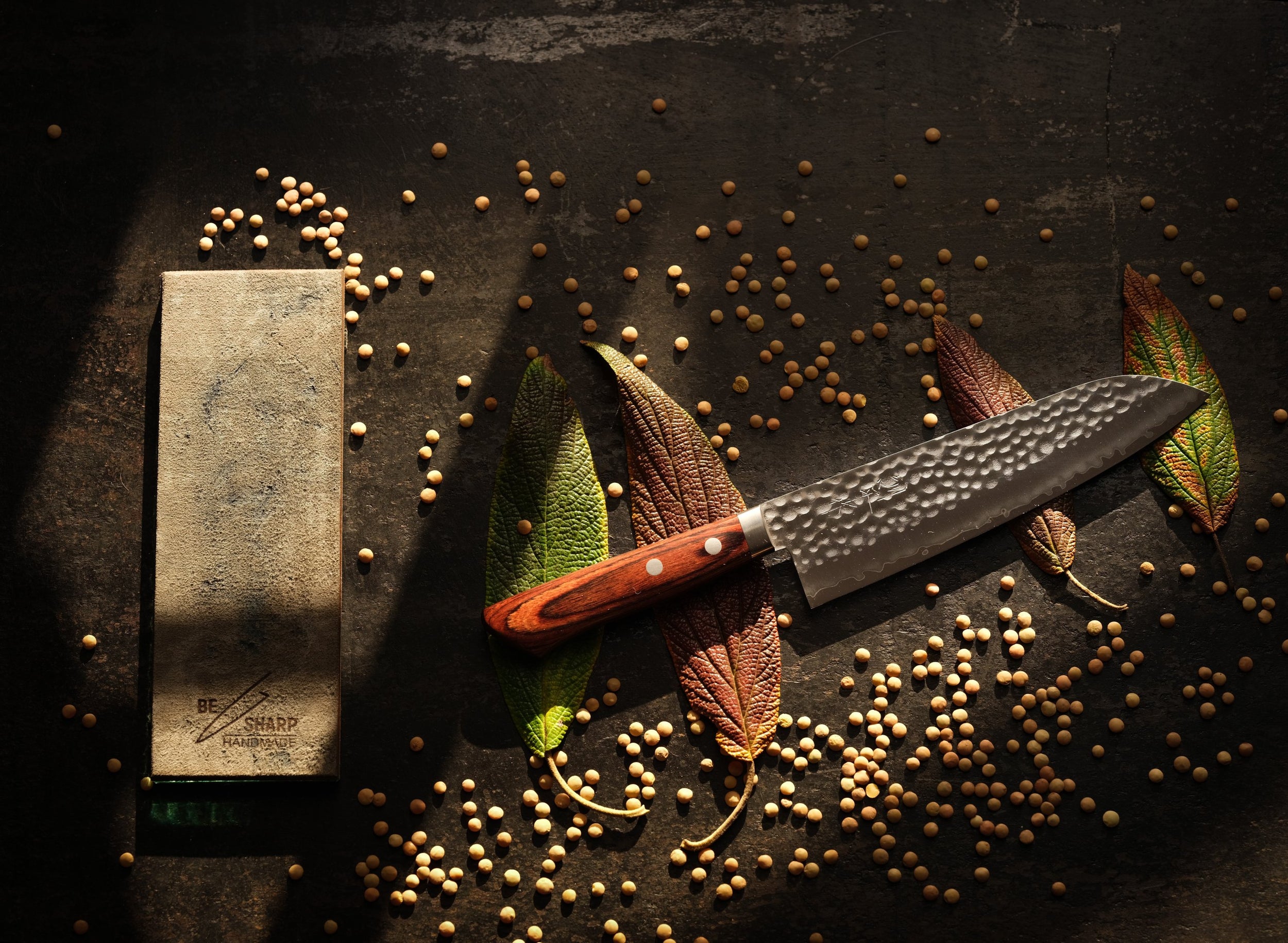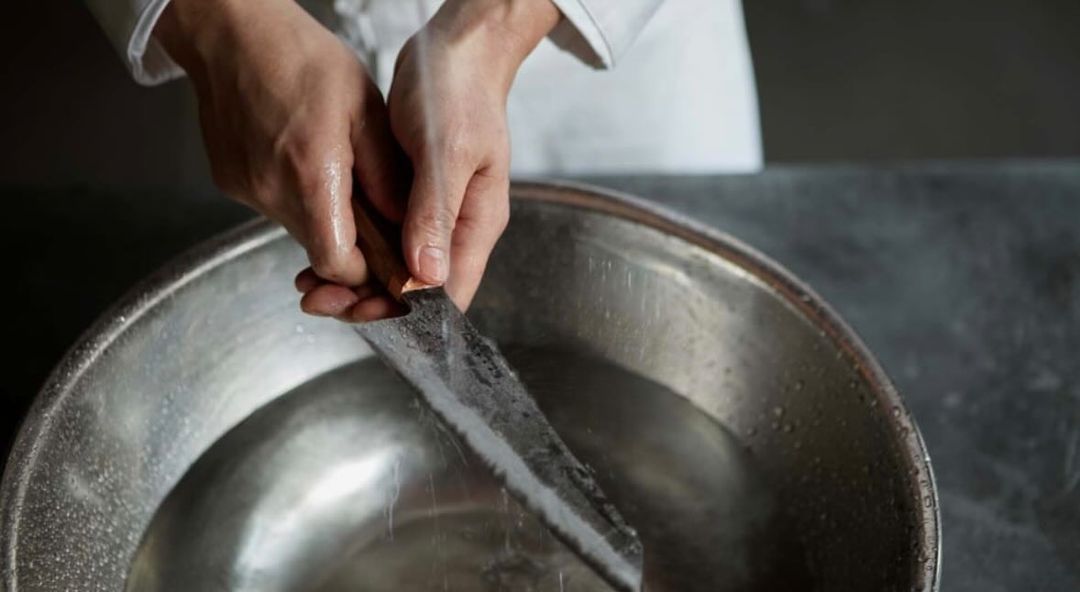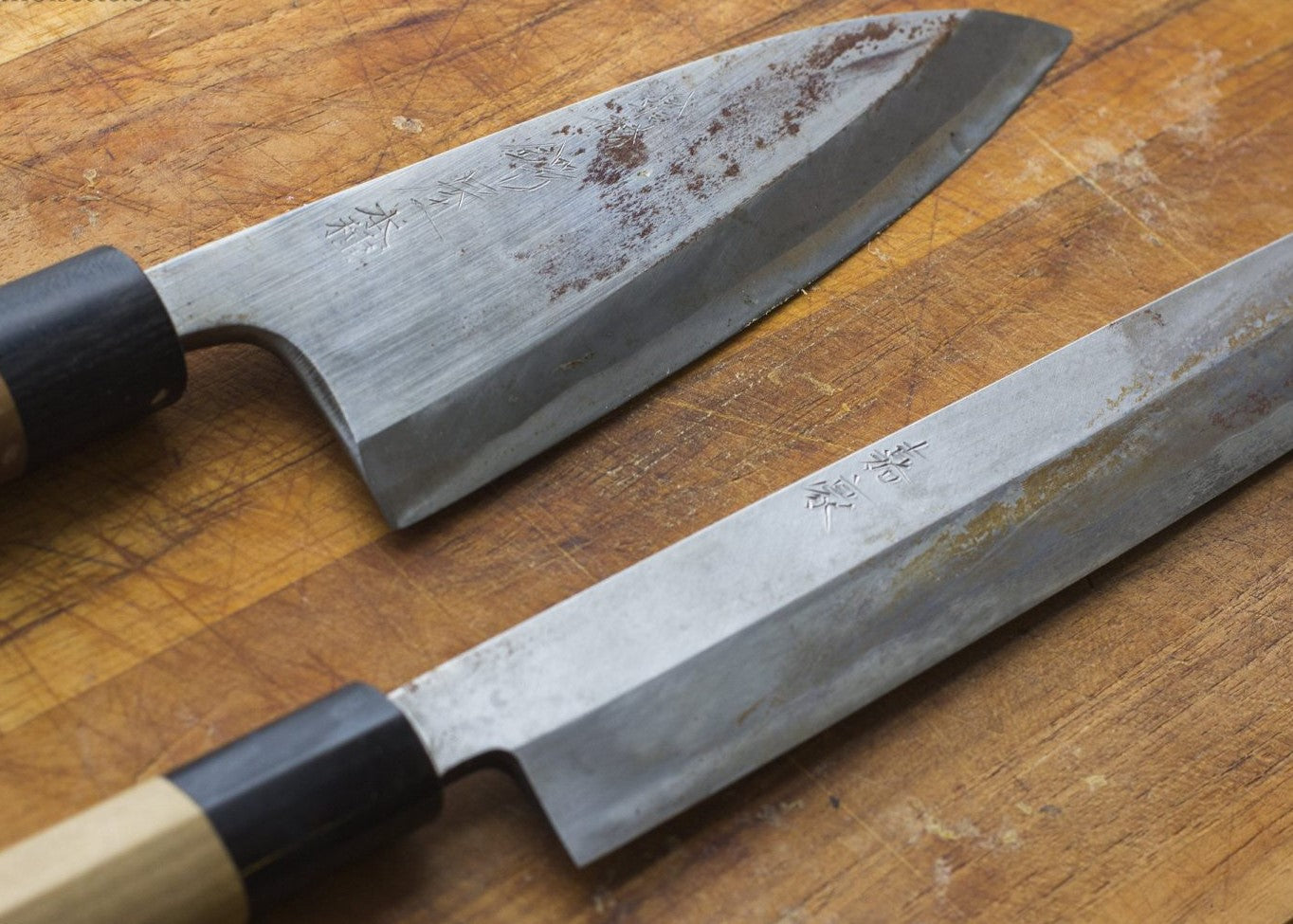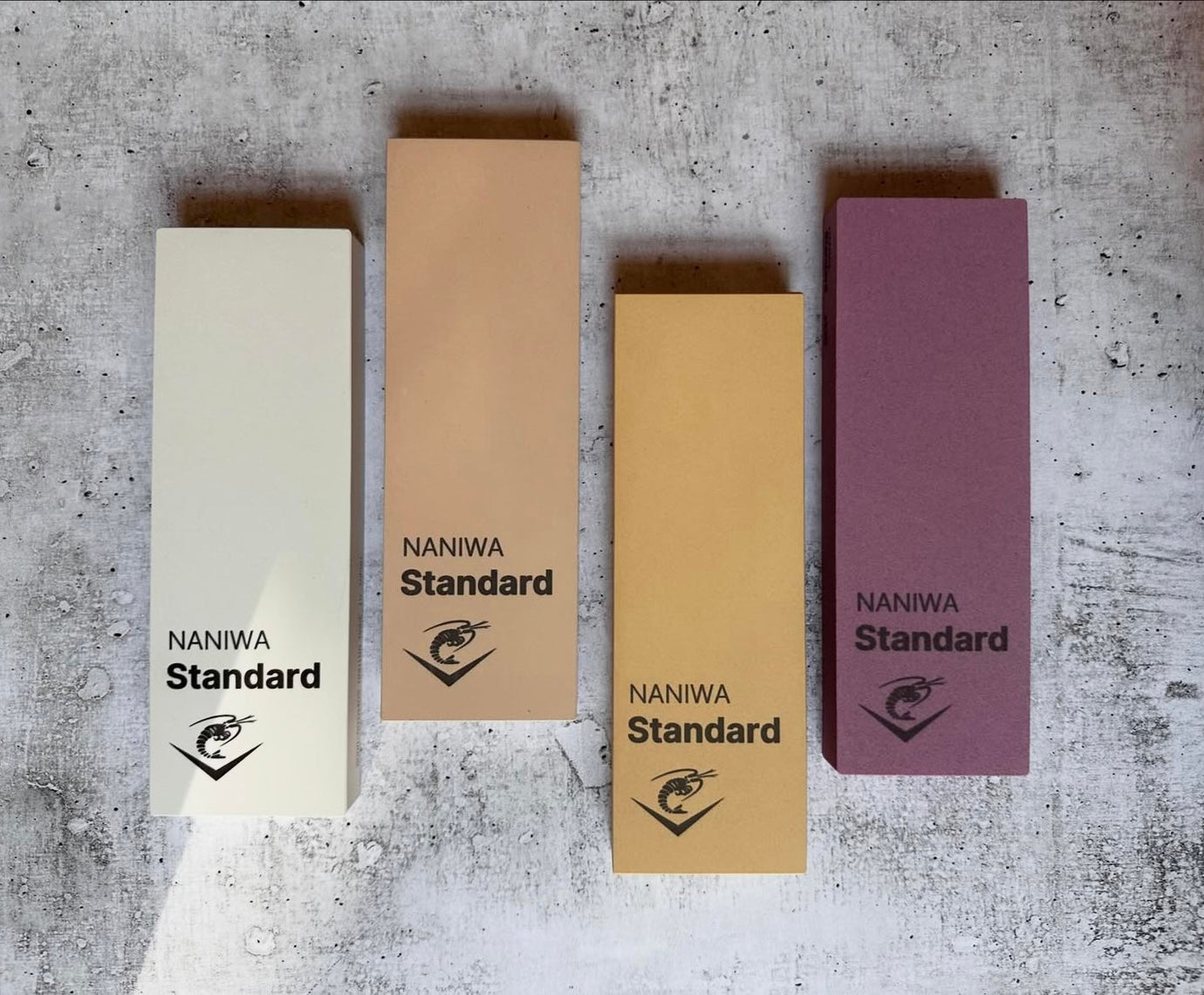Sharpening Japanese knives

Every knife, no matter what steel it's made of or how much it's paid for, sooner or later will break and need to be resharpened. It is very important that you do the sharpening process properly so that your knife will serve you for many years. We will talk about everything important on this topic, as well as how to avoid mistakes that can cost you a ruined knife forever.
In order to sharpen the knife, it is necessary to remove a certain amount of steel with the abrasive action of the stone and establish a new blade. The question is, what is the specific amount of steel? The answer is always the same, minimal and necessary. With proper sharpening, we remove only as much steel as is necessary to establish a new blade, anything beyond that would mean a direct shortening of the working life of the knife, and often a disturbance in the shape of the knife. The service life of a properly sharpened Japanese knife used in professional kitchens should be several decades, and most often between 35 and 40 years.
If we don't sharpen the blade properly, it can be completely destroyed after just one sharpening, and that's why it's important to entrust this work to a reliable sharpener or to equip yourself with knowledge and the right tools if you want to sharpen your knives yourself.
Professional sharpening service
In Japan, knives are sharpened using water whetstones. This is the traditional, generally accepted and most correct way of sharpening knives. The blade is moved in a very controlled manner over the surface of the stone, which is composed of abrasive grain that removes a very small amount of steel. An experienced sharpener can perfectly sharpen a knife that was previously in good condition in just a few minutes, while sharpening damaged knives can require several hours of engagement.
It is important to say that when we talk about sharpening a knife, we are thinking exclusively about establishing the blade itself along the edge of the blade. If your blade is in bad condition or has started to lose performance after several years of use, a professional sharpener can advise you to sharpen your knife when the need arises, and this represents another type of service, which is much more demanding and expensive than sharpening itself.

Japanese knives should not be sharpened using different types of sharpening wheels that spin at high speeds and uncontrollably and unnecessarily remove steel from the knife. In addition to the high number of revolutions, these grinders do not have any cooling systems, which is a deadly combination for any steel. Once tempered steel can never be a good knife blade again. In addition to the fact that sharpening on a spindle is not the most correct, some Japanese knife shapes cannot be sharpened on a spindle at all and any attempt will result in a permanently damaged blade.

Be Sharp provides a service of professional sharpening of knives on a water whetstone as well as repairs of damaged knives, which we are very proud of.
Self-sharpening of knives.
Using the right tools combined with basic knowledge and a little practice, anyone can sharpen their knife. It is very popular in the world for every chef, chef or cooking hobbyist to sharpen their own knives, and this practice is slowly gaining popularity here as well. All you need is a stone for sharpening knives and a leather ceiling. You can see the entire offer of sharpening stones here.
Unlike other sellers whose goal is to sell as much as possible, we do not advise buying a large number of different stone grits, but recommend that you start with one quality #1000 grit stone and Leather Ceiling with Koyo paste . At this grain you can sharpen any knife that is in decent condition while the leather ceiling serves to achieve a final sharpness that is more than satisfactory for 90% of everyday needs. In fact, for all knives from European manufacturers, it is not recommended to switch to finer graining, while this stone is also suitable for sharpening all Japanese knives.

If you want to speed up the sharpening process, it is preferable to start sharpening on a coarser grit stone from #120 to #500. These stones remove steel quickly and can easily repair damaged blades. After this stone you will continue the sharpening process on the #1000 grit and finish with a leather ceiling.
To achieve an extreme level of sharpness you need to have finer grit stones like #3000, #6000, #8000. Although this sharpness is not necessary for a kitchen knife, we completely understand the fans of these grains who want their knife to be as sharp as possible.
You can read more information about choosing a sharpening stone on our blog: "Hobby or professional stones: Which one is right for you?"
Advice from an experienced sharpener "Before you start sharpening your perfect Japanese knife, first practice the technique on a less important and cheaper knife". Also, if you are not sure how to sharpen a knife, you can schedule a sharpening lesson with us. In the two-hour workshop, we will remove all your doubts and you will learn all the necessary techniques in order to achieve the desired results in every future self-sharpening. You can schedule a sharpening class here.





